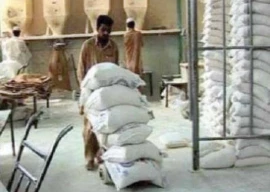
Over 1.2 million deaths and 50 million injuries a year are no small numbers. These are WHO figures reported for road accidents globally in 2017, highlighting the important subject of safety on roads. A number of factors contribute to compromised road safety leading to these tragic statistics. They include speeding, poor vehicle and road condition, driving under the influence of alcohol and drugs, not wearing safety belts, unlicensed underage driving, etc.
The International Association of Traffic & Safety Sciences (IATS) draws interesting correlation between incidence of road accidents and income levels of countries, reporting that countries with Lower and Middle Levels of Income (LMICs) have higher incidence of accidents on roads. Almost 90% of road fatalities reportedly take place in LMICs. Pakistan and Bangladesh rank around midpoint; higher than India, Nepal, Jordan and Saudi Arabia. Global statistics also draw a direct correlation between the risk of accidents and age and genders of driver. Research over 30 years reports that young drivers are five to 10 time more likely to crash and this risk is higher for male drivers compared to females. The UN has included road safety in their SDGs and a number of global initiatives have been committed to making our roads safe and less accident prone.
Pakistan, being an LMIC, does not take road safety much seriously. Violation of traffic rules is part of every day and an accepted norm. Traffic rule violators are not frowned upon and those following speed limits are often victims of tailgating. The Pakistan Bureau of Statistics reported 9,100 accidents resulting in 5,509 deaths caused by road accidents in Pakistan in 2015-16. These by some estimates may be heavily underreported but are still alarming with nearly 15 lives cut short everyday due to road accidents. It is estimated that nearly 80% of the fatalities are male.
While no data is available countrywide on how many of accidents were due to juvenile drivers, media reports and local research suggests numbers to be high. The report by IATS also analysed relationship between age category and risk of serious injuries, clearly establishing the incidence to be much higher for juveniles (aged between 12 and 19 years). While the minimum age for obtaining a driving licence in Pakistan is 18 years, this regulation is commonly abused. Market survey conducted recently by a local automotive portal involving 25,000 respondents found that 64% of the respondents to the survey were under 21 years of age and had no driving license.
Often young boys are seen driving motorbikes and cars, sometimes engaging in hazardous one-wheeling and unauthorised racing. These sights are often common as part of festivities, such as Chand Raat, winning of cricket matches, New Year, et al. Groups of young boys are also often seen outside schools, where the driver promptly hands over the car keys to the young master. One wonders if this is in the knowledge of parents for whom the most precious possession is the life of their child. Whatever the social contract may be, it is nevertheless precarious for young kids, obedient driver, doting parents and society at large. Media often reports tragic news whereby precious young lives are lost due to underage driving. Other situations validating juvenile driving is ironically driven by adults at home. Keys to the vehicle are handed to the younger one as a token of love and pride, while sometimes under the pretext of a helping hand, a young kid is asked to fetch groceries from a corner store. Whatever the pretext may be, it is giving control in the hands of young children who would most often underestimate the perils of underage driving.
Pakistan, being an LMIC country with 60% of its population being youth, is likely to experience an increase in the number of juvenile drivers. We must be better equipped to curb underlying causes leading to underage driving. Huge responsibility rests with parents to draw safety boundaries and educate their children on being socially responsible. Awareness campaigns should be run in schools, colleges and universities. Some of the developed countries with better scores on road safety than us are working towards including road safety rules as part of school curriculum. High Income Countries are seen to teach small children road safety rules through cartoons, books and practical demonstrations. Safety and abiding by law is embedded in their DNA. It will also help us to learn from other countries which have been successful in improving their performance, eg, Spain managed to reduce road accidents by almost 71% over 2000-2013 by taking effective measures.
Since underage driving have implications for others on the road, road safety rules must be strictly enforced, ensuring that violators are reprimanded accordingly. Crackdown against underage drivers is randomly carried out in large cities whereby a number of vehicles are remanded, challans issued and parents required to give indemnity bonds. These measures have been incidental and have not proved to be successful in curbing the issue. The issue seems to have been overlooked. Whilst stricter regulations and enforcement from the government quarters are awaited, we need to make a collective call for actions condemning practices of underage driving and raising awareness of perils around it thereby saving precious lives.
Published in The Express Tribune, May 24th, 2018.
Like Opinion & Editorial on Facebook, follow @ETOpEd on Twitter to receive all updates on all our daily pieces.















































COMMENTS
Comments are moderated and generally will be posted if they are on-topic and not abusive.
For more information, please see our Comments FAQ